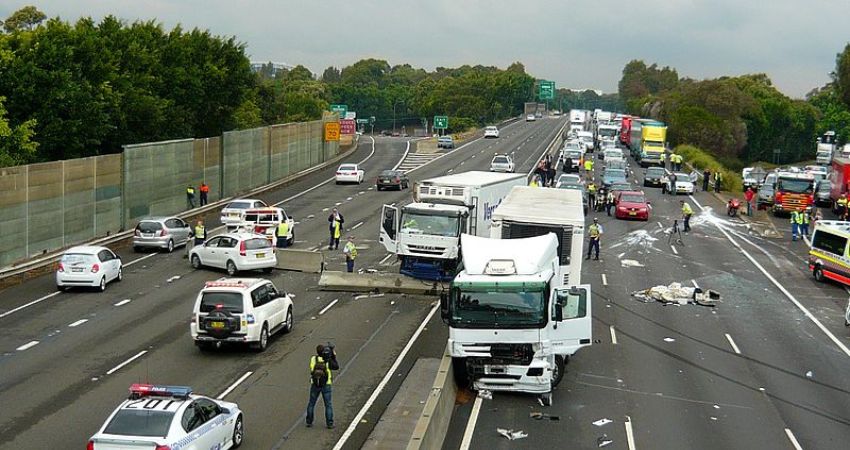Automobile Accident Injury Settlement Process: A Comprehensive GuideAutomobile accidents can be traumatic experiences, often resulting in physical injuries, emotional distress, and financial burdens. Navigating the aftermath, particularly the settlement process, can be overwhelming. This comprehensive guide aims to demystify the automobile accident injury settlement process, providing valuable insights and steps to help individuals pursue fair compensation.
Automobile Accident Injury Settlement Process
In the aftermath of an automobile accident, the settlement process typically begins once the injured party files a claim with the insurance company. Understanding the key components of this process is crucial for a successful outcome.
Assessing Damages

The first thing we do when dealing with an accident is figuring out how much damage happened. This means looking at things like how much it costs for medical treatment, fixing stuff that got broken, money lost from not being able to work, how much pain and suffering someone went through, and any other costs related to the accident. We need to gather documents like medical bills, estimates for fixing things, and proof of how much money someone was making before the accident. These documents help us understand what happened and how much it will cost to make things right.
After an accident, the first important step is to understand how much harm has been done. This involves looking at various aspects of the situation to determine the extent of the damage and the costs associated with it.
One significant area to consider is medical expenses. This includes the cost of any treatment or care needed because of the accident, such as hospital bills, medication, therapy, or ongoing medical care. Understanding these expenses is essential for ensuring that the injured party receives proper compensation to cover their medical needs.
Determining Liability
Establishing liability is a critical aspect of the settlement process. This involves determining who was at fault for the accident. In some cases, liability may be straightforward, while in others, it may require thorough investigation and evidence gathering.
Negotiating with Insurance Companies
After figuring out who’s responsible and how much damage there is, talks start with the insurance company. The people who work for the insurance company, called adjusters, might suggest an amount of money to settle things. But it’s really important to look at their offer closely and talk about it to make sure it’s fair. Getting advice from a lawyer can help a lot during this part to understand everything and work out a fair deal.
Once the extent of damages and who is responsible for them is figured out, the next step is to start talking with the insurance company. This is where things can get a bit tricky. The insurance adjusters, who are the people from the insurance company, might offer a sum of money to settle the issue. This amount is called a settlement.

Now, while it might seem like a relief to get an offer, it’s really important not to just accept it right away. That’s because the first offer might not always be fair and might not cover all the costs and losses you’ve faced due to the accident or incident.
So, what should you do? Well, the key is to carefully review the offer and think about whether it truly covers all the expenses you’ve had because of the incident. This could include things like medical bills, property damage, lost wages from time off work, and even emotional distress.
Seeking Legal Representation
In cases where negotiations with the insurance company are challenging or disputes arise, seeking legal representation is advisable. Personal injury attorneys specialize in advocating for the rights of accident victims and can provide invaluable assistance throughout the settlement process.
Mediation and Arbitration
When talks can’t move forward, other ways to solve problems can be used, like mediation or arbitration. These methods involve bringing in someone who doesn’t have a stake in the argument to help both sides talk it out and find a solution without going to court.
Mediation involves bringing in a neutral person, often called a mediator, who doesn’t take sides but helps the conflicting parties talk things through. The mediator listens to both sides, helps them understand each other’s viewpoints, and guides them towards finding a solution that works for everyone. It’s like having a referee in a game who makes sure both teams play fair and find a way to end the game without fighting.
Arbitration is a bit different. Instead of just guiding the discussion like a mediator, an arbitrator listens to both sides and then makes a decision. This decision is usually binding, which means both parties have to accept it, just like a referee’s decision in a sports match.
Both mediation and arbitration can be helpful because they offer a way to resolve disputes without going to court. They’re often quicker and cheaper than a court case, and they can also be less stressful for everyone involved. Plus, they give both sides more control over the outcome, since they get to be part of the decision-making process instead of leaving it up to a judge or jury.
Filing a Lawsuit

As a last resort, filing a lawsuit may be necessary to pursue fair compensation. This step involves initiating legal action against the at-fault party or parties responsible for the accident. Litigation can be complex and time-consuming, underscoring the importance of legal representation.
Trial and Judgment
If the case proceeds to trial, both parties present their arguments and evidence before a judge or jury. Following deliberation, a judgment is rendered determining the outcome of the case. It’s essential to be prepared for trial and have a strong legal strategy in place.
Accepting a Settlement or Appealing the Decision
After a judgment is issued, parties may choose to accept the settlement offered or appeal the decision if they believe it is unjust. Deciding whether to accept a settlement or pursue further legal action requires careful consideration of the potential outcomes and implications.
Conclusion
The automobile accident injury settlement process can be complex and daunting, but with the right knowledge and resources, individuals can navigate it successfully. By understanding the steps involved, seeking legal guidance when needed, and advocating for their rights, accident victims can pursue fair compensation for their injuries and losses. Remember, patience and persistence are key as you work towards resolving your claim and moving forward on the path to recovery.



